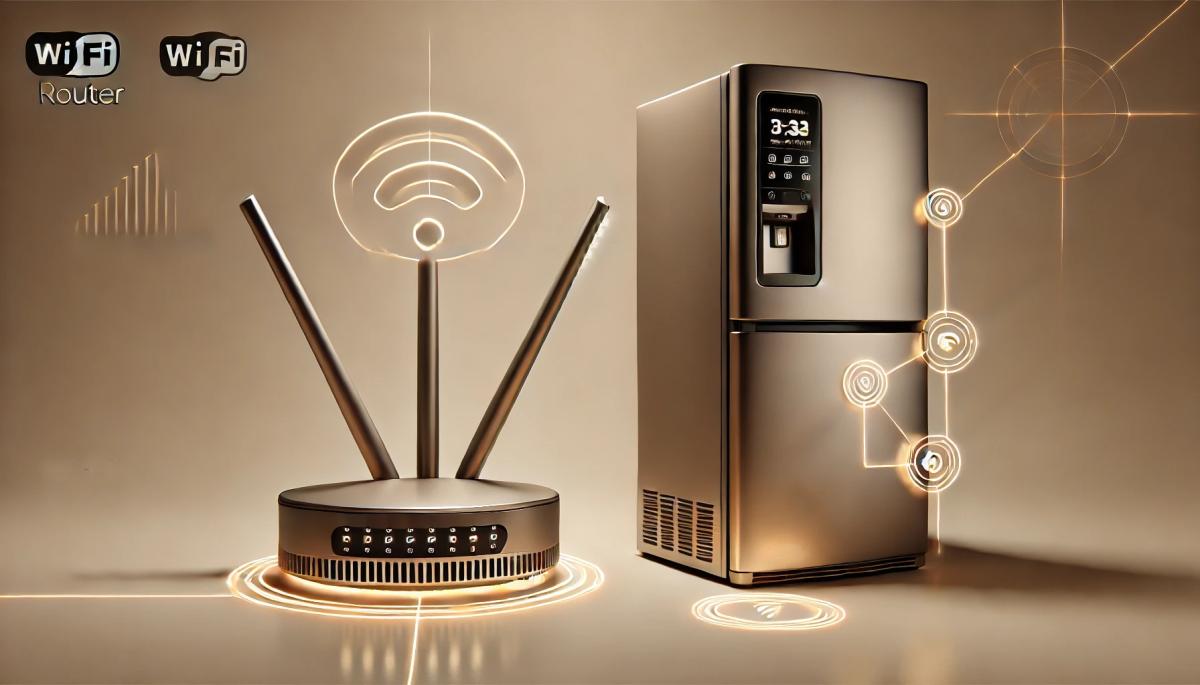Wi-Fi 6, the latest wireless network standard, brings a revolution in speed, capacity, and efficiency. With new technologies like OFDMA, MU-MIMO, and BSS Coloring, it can provide up to four times the throughput and serve more devices simultaneously. Find out how Wi-Fi 6 can help you at home and in the office.

Wi-Fi has long been one of the most used wireless technologies for internet connectivity. With the continuously growing demands for speed and stability, innovation becomes necessary. The latest advancement is Wi-Fi 6, promising significant improvements in the performance and usability of wireless networks. What new features does it offer, and how could it impact our daily lives?
What is Wi-Fi 6?
Wi-Fi 6, also known as 802.11ax, is the latest standard for wireless networks. It is designed to increase speed, capacity, and efficiency, especially in high-density device environments. This allows for the seamless connection of an entire smart home without interference or unwanted outages.
Main advantages of Wi-Fi 6
Wi-Fi 6 builds on the foundations of previous standards but offers numerous improvements for better performance and connection stability.
Higher speed
Wi-Fi 6 theoretically enables speeds up to 9.6 Gbps, nearly three times the maximum speed of the previous Wi-Fi 5 (802.11ac) standard. In practice, this means users can expect faster data downloads and uploads, smoother video streaming, and better response times during online gaming.
Greater network capacity
As the number of connected devices in homes and offices increases, the ability to handle multiple devices simultaneously is key. Wi-Fi 6 uses OFDMA (Orthogonal Frequency Division Multiple Access) technology, allowing for more efficient use of the bandwidth. It can serve up to four times more devices than previous standards.
Lower latency
Latency, or the delay between sending and receiving data, is critical for response-sensitive applications such as online games, video conferencing, or virtual reality. Wi-Fi 6 reduces latency through Target Wake Time (TWT) technology, allowing devices to communicate with the router more efficiently and conserve energy.

Better coverage and penetration
Wi-Fi 6 uses beamforming technology, allowing routers to direct signals to individual devices instead of broadcasting in all directions. This improves coverage and signal strength, especially in larger spaces or areas with obstacles. Users can expect more stable connections throughout the home or office.
Compatibility and availability
While Wi-Fi 6 is relatively new, many devices already support it. Many smartphone, tablet, laptop, and other device manufacturers offer models with Wi-Fi 6 support.
To leverage all the benefits of this standard, a compatible router is necessary.
On the other hand, it is backward compatible with previous standards, meaning even older devices can connect to a Wi-Fi 6 router. However, they will not be able to utilize all the new features and improvements it offers.
The future of Wi-Fi
Wi-Fi 6 represents a significant step forward in the evolution of wireless networks. With the increasing number of connected devices and demands for speed and stability, this standard will play a crucial role in the future of Wi-Fi.
Wi-Fi 6 is expected to be widely adopted not only in homes and offices but also in public spaces like airports, stadiums, or shopping centers. Its ability to manage a large number of devices and provide fast and stable connections makes Wi-Fi 6 ideal for high-density user environments.
The next step in Wi-Fi's evolution will be the Wi-Fi 7 (802.11be) standard, currently being developed. Compared to the current standard, it promises even higher speeds, lower latency, and better spectrum utilization. Some devices already support Wi-Fi 7, including the iPhone 16.
If you're considering upgrading your router or getting a new device, investing in products with Wi-Fi 6 support might be a good idea. This will ensure your network is ready for future demands and provides you with fast, stable, and reliable internet connectivity.
Leaked passwords: How to find out if someone has obtained your data

Data breaches happen all the time and can affect anyone. Even strong login credentials can appear in the database of leaked passwords circulating on the internet. In the article, you will learn how to perform a password check using verified tools and find out if someone has gained access to your accounts.
Internet via light or how does Li-Fi work?

With the growing number of connected devices and the increased volume of data being transmitted, new ways are being sought to speed up and improve network efficiency. Internet via light, referred to as Li-Fi technology, uses LED lighting for wireless data transmission and promises higher speed and greater security. Let's see how it works and where it's already being tested.
What will 6G internet bring – lightning-fast connection, smart cities, and artificial intelligence in the network

Mobile networks of the sixth generation will push the boundaries of communication and data transmission. 6G internet will offer speeds in the order of terabits, minimal delay, and integration with artificial intelligence. In the article, we explain how this technology works, how it differs from 5G, what frequencies it uses, and why it is essential for smart cities and modern industry.
Wireless charging: What are its benefits, limitations, and where is it heading?

Wireless charging has evolved from a luxury feature to a standard part of most modern phones. Simply place your mobile on the pad, and energy begins to flow without searching for a cable and connector. We explain how wireless charging works, what it entails, and why Qi and Qi2 technologies have become the new standard of convenience.
What is Wi-Fi 7? What changes does it bring and when does it make sense to switch

Today's home Wi-Fi network is under increasing pressure. It has to handle video calls, online gaming, and dozens of smart devices. The new Wi-Fi 7 standard offers a solution that takes wireless connectivity to the next level. We'll explain what this standard means in practice and why it might be crucial for the future of home and business networks.
What is DNS? Everything you need to know about its functionality and setup

When you type a website address into the browser, the correct page loads in an instant. This is managed by the DNS system, without which the internet as we know it would not exist at all. In this article, you will learn what DNS is, how it works, what types of records it contains, and why it is important for both speed and security of the connection.